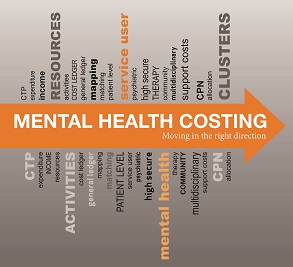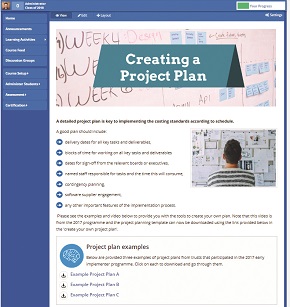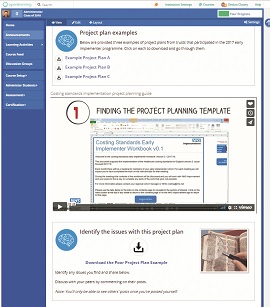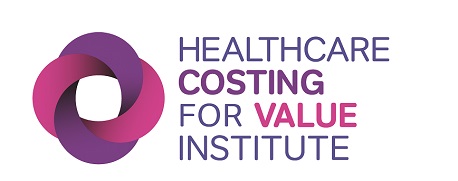Costing: mental health moves centre stage
Costing of mental health services has been in the shadow of its counterpart in acute providers ever since the NHS first took an interest in understanding how it spent its funds. This can in part be explained by poorer data, particularly for non-admitted care, and the lack of a reference cost-based national tariff for mental health services.
However, the push to transform costing across all NHS services makes a big stride forward this year as NHS Improvement hopes to get close to half of all mental health providers making a submission of cost data at the patient level.
Nobody expects perfect cost data to emerge from this exercise. But, if successful, it will mark a major milestone in mental health providers’ journey to understand their cost base better and provide a foundation for exploring opportunities for improvement.
At the start of April, NHS Improvement will launch version 2 of its Healthcare costing standards: mental health and hopes that around 25 mental health providers will volunteer to use the standards to calculate patient-level costs for their services and then submit them to the oversight body later in the year.
In return, these early implementers would get access to a portal of cost data based on all the submissions, which would enable them to start benchmarking costs and pathways. Early implementing acute trusts already have access to such a portal.
This would be a major achievement. NHS Improvement’s Costing Transformation Programme (CTP) aims to get all providers in the English NHS compiling and submitting patient-level cost data by the summer of 2021 (submitting data for the 2020/21 financial year).
Acute providers will lead the way. Some 60 acute providers last year voluntarily submitted patient-level cost data, compiled according to the new standards – final versions of which were published earlier this year. And the NHS Improvement board recently agreed to make patient-level costing mandatory for acute providers from the 2018/19 return in the summer of 2019.
While no decision has yet been taken to broaden this mandatory requirement to mental health, ambulance and community services, consultations for mental health and ambulance take place later this year.
Mental health providers are in general following a trajectory just one year behind acute providers. However, they are starting from a lower base in terms of historical investment in costing systems and support.
‘There is a lot of enthusiasm among mental health trust costing practitioners to really improve the costing data their trusts can use to inform decision-making,’ says Fiona Boyle (pictured), NHS Improvement’s costing manager, responsible for the mental health and community costing standards. ‘We want to give them as much support as we can to help them realise this ambition.’
The updated standards are fundamental to this support. Ms Boyle believes they do not represent a major rewrite on last year’s initial mental health draft standards, but build on the basics and add applicable detail for the sector. However, they are likely to be the first standards used by a large group of mental health trusts.
Last year, three mental health road map partners submitted patient cost data using the first version of the standards. This year, NHS Improvement hopes to get a significant part of the sector involved.
The oversight body believes it makes sense to take part in the transformation programme as soon as possible. It is likely that the sector will be required to adopt the standards in future and experience from the acute sector suggests that improving costing is an iterative process – so the sooner trusts start, the quicker their data will improve and the more useful it will be.
The standards should not come as a surprise to anyone who has been keeping track of the development of standards for acute services (and ambulance and community, for that matter). The aim is to have a consistent methodology, regardless of setting. As a result, the standards have the same format – they even use the convention of referring to ‘patients’ in all versions, not the more frequently used ‘service user’ preferred in mental health settings.
As with all the sector-specific standard sets, the mental health standards come in sections, covering: information requirements; cost processes; cost methods; and (currently acute only) costing approaches.
The differences come in the details and examples. The information requirements for mental health, for example, rely on trusts complying with the recently mandated mental health services data set (MHSDS).
Common processes
The processes described in the standards are similarly common to all sectors. These cover the creation of a costing ledger with a predefined structure from organisations’ own general ledgers. This common starting point then allows these costs to be mapped first to resources and then to activities before finally being attached to unique patient spell, attendance or contact.
With many of the defined resources and activities common to all sectors, the mental health versions of the standards simply add in resources that are specific to the delivery of mental health services.
For example, mental health-specific resources might include a music therapist or a psychiatric nurse. Examples of unique activities would be ward care on either a psychiatric intensive care ward or in an eating disorder inpatient unit.
Standards for costing methods cover high-volume or high-value services or departments. While some of these are common to all sectors, mental health-specific standards focus on issues such as costing of group sessions, home leave, escorting and specialling.
Ms Boyle says the deliberate aim is to make the standards as similar as possible across all the sectors, while still reflecting the different activities undertaken in those sectors. ‘This is particularly important for integrated trusts,’ she says.
‘We are trying to give consistency so that costing practitioners have a single suite of information they can refer to. And they can do this through the same costing system, and from the general ledger to the same costing ledger, all the way through. The consistency also brings benefits for pathway reporting.’
Not all mental health providers currently have a patient-level information and costing system (PLICS) capable of supporting the new costing approach. But this isn’t necessarily a barrier to rapid progress. One of the acute early implementers last year implemented a new system alongside using the standards for the first time.
And Ms Boyle says some of the mental health trusts that have volunteered to take part this year are also still in the process of procuring and implementing a new system.
In any case, she says, that work does not have to wait for the introduction of a new system. ‘A lot of the work that needs to be done is preparation,’ she adds. ‘ [This involves] getting an understanding of where the organisation has the required data and where it can meet the standards, allowing for planning work where the gaps lie. They may comply with more areas than they think.’
When the standards arrive, she recommends all costing practitioners read through the two information requirement and six costing processes standards – a new standard on assurance has been added this year.
Ms Boyle accepts that some of the prescribed processes will be significantly different from existing practice. However, she says that practitioners should not worry if they don’t understand everything immediately. Help is at hand. For a start, two gap analysis tools (one for information and the other covering the standards) will give practitioners and organisations an idea of what they need to prioritise.
This year both acute and mental health practitioners will also have a new support implementation platform to help them (see page 17), delivering tutorials, providing discussion forums, setting tasks and suggesting reading materials.
Early implementers that access the gap analyses through the online platform will also be able to get help completing them, if there are areas they are struggling with.
Ms Boyle accepts that mental health trusts face a steeper curve in implementing patient-level costing than their acute colleagues. She identifies three key challenges. ‘Data quality is a key issue,’ she says. Traditionally, a lot of detail about patient interactions in the mental health sector hasn’t been recorded. A trust may run a group music therapy session, but the actual patients attending may not be formally recorded in an activity system.
‘Looking at activity systems, a trust may know that a patient was visited in the community, but not know exactly which practitioners were involved or how long the session lasted.’
Playing catch-up
The fact that the MHSDS is now mandated should help to standardise the collection of required data. However, some of the specific fields needed for costing do not have the mandated status. The reality of the situation is that the sector has not been able to switch on the new data set requirements overnight and is working towards full compliance.
For a number of trusts, this has been an area that has suffered as a result of underinvestment in systems and staff. And the current financial climate makes it even more difficult for some to catch up on that investment in the short-term.
Resources available to support costing have been another issue. While NHS Improvement has made it clear the NHS overall needs to increase the resources available to support the CTP, this is even more the case in mental trusts.
Ms Boyle says many trusts have just one costing practitioner, and this has not always been a full-time post – some mental health trusts have only funded a position to cover the specific task of submitting reference costs.
‘We are asking the senior level of organisations to consider if this is enough to do PLICS,’ she says.
There are significant benefits to be had from patient-level costing data – increased business intelligence, benchmarking and improved decision-making. But realising these benefits may need some organisations to increase the resources being used.
‘Costing practitioners are a key part of this,’ explains Ms Boyle. ‘But it is also about the information system and the staff helping to build data feeds and the support needed to ensure the data gets out into the organisation and is used.’
This leads into the third issue – ensuring boards understand the importance of good costing.
‘The message needs to come from the top so it is understood by management and clinical teams,’ says Ms Boyle. ‘Where this is the case, it has been shown to benefit the programme all the way through.’
This buy-in from the top of the organisation is a fundamental foundation for making a success of patient-level costing.
The case is arguably harder to make within the mental health sector. All providers stand to benefit from a deeper understanding of their costs – helping them to identify and understand the cost implications of different pathway options and variations in practice, for example.
However, for many acute trusts, deep dives into patient cost data have highlighted long-running coding errors. Fixing them has often improved income with an activity-based tariff system. Given mental health’s current reliance on block contracts, the same potential benefit doesn’t exist in this sector.
However, Ms Boyle says the major benefits remain in place and boards need to recognise the broader benefits of understanding their cost base accurately – as well as the potential for any future payment approaches to be based on more accurate data.
She adds that some mental health trusts are still endeavouring to undertake a service line reporting-type analysis and actual patient cost data will improve these approaches.
There is significant interest from system leaders in establishing patient-level costing across the NHS. Better costing could inform existing and future national prices for services – or better inform capitation budgets. They are seen as important to underpin national efficiency programmes such as Getting it right first time and the Model Hospital. However, the prime benefit is in improving local decision-making.
Armed with patient-level costs, trusts will be able to better understand the financial impact of pathway variation and eliminate the variation where it is unwarranted. Comparing overall costs and the make-up of those costs across all providers will enable organisations to spot opportunities for improvement
and investment decisions will be better informed.
Mental health trusts stand to gain from these benefits as much as providers. In fact, after work in recent years to understand existing service provision and develop more standard packages of care as part of moves towards contracting on the basis of mental health clusters, patient-level costs could mark a step change in management information.
The clear message from NHS Improvement to mental health trusts is to get involved and start the journey now.
Implementation support
NHS Improvement’s new Costing Standards Implementation Platform will offer an interactive training forum for costing practitioners. 
All early implementers for acute, mental health and ambulance sectors will have access to this new online system. It offers versatile training methods and support, including:
- ‘Whiteboard animation’ examples of the costing process
- Training modules
- Discussion forums
- Productive tasks that actually contribute to the costing process
- Access to direct query assistance with NHS Improvement costing managers.
Some of the units are shared across all sectors; others are sector-specific and examples are tailored to sectors.
A Cost ledger auto-mapping application has also been produced in response to feedback from last year’s implementation programme.
The algorithm is designed to reduce the time it takes for an organisation to set up its general ledger to cost ledger mappings.
Early tests indicate that it will map between 50% and 90% of an organisation’s general ledger to the standardised cost ledger – depending on how standardised a trust’s general ledger expense codes are.
According to NHS Improvement, the costing practitioners who have tested these resources have welcomed them.
Road map experience
New data streams and costing practices cannot be established overnight, so getting started as soon as possible is the advice from one of NHS Improvement’s mental health road map partners.
West London Mental Health NHS Trust (pictured) delivers mental health services and some community services. Its mental health services include high-secure units (Broadmoor) as well as services in low- and medium-secure environments. In total, it delivers services from 27 sites and employs around 3,000 staff.
The trust signed up to be one of NHS Improvement’s Costing Transformation Programme road map partners, an early adopter and user of the developing mental health costing standards.
Last year, it made its first patient-level cost submission of 2016/17 data along with two other organisations.
‘We had a costing system [Civica’s Costmaster] that we knew could do it,’ says Pamela Farrow, the trust’s head of costing. ‘We had been using it at a very high level, doing our reference costs on a top-down basis and producing high-level service line reports. We just needed a push to start doing more patient-level costing.’
The process laid out in NHS Improvement’s costing standards involved a completely different approach – mapping costs in the general ledger to the costing ledger and resources and then allocating these resources to activities before sharing these activity costs between patients based on the activities they have received.
The mapping exercise has not been straightforward – Ms Farrow says it has introduced a disconnect between budget-holder statements and cost reports – but she can understand why a consistent approach across all bodies makes sense.
It also highlighted description codes for teams recorded in its Rio electronic patient record that did not match ledger descriptions, and cases where there were costs in the ledger but no matching activity.
In general, Ms Farrow says, the standards they were working with last year (version 1 for mental health) were still not very mental health sector-specific, having been developed from the acute standards. But this month’s revised standards address many of these concerns.
The first attempt to cost at the patient level exposed inevitable gaps in data. ‘We didn’t have pharmacy data by patient so we continued to use our old method – allocating to teams and sharing with patients treated by those teams,’ says Ms Farrow. ‘But the process also highlighted reporting differences across the trust. We found that for some wards, all therapy sessions – art, physio or occupational – are recorded, while for others they aren’t. This made comparison between the wards difficult.’
The trust was keen to make the costs produced as accurate as possible, although Ms Farrow says it is not an overnight fix.
‘We now know what we’d like to see recorded on the wards. And the system is there for staff to record the activity. But we need to get the balance right between adding administrative tasks on to frontline carers’ workload and getting the information we need to produce more accurate costs.’
Being able to recognise acuity of patients has been another challenge. It is important to be able to count the duration of each meeting and which member of staff was attending. Again with its Rio system capable of recording at this level of detail, the challenge is in normalising this in routine staff practice and being able to sell the benefits of doing this to those staff members.
With just 1.5 whole-time equivalents meeting continuing reference cost requirements and leading the costing transformation work, the trust faces a demanding challenge with costing.
Ms Farrow is realistic about the trust’s ability to increase costing resources in such a difficult financial context, despite board level buy-in for the programme.
That means accepting that moving to patient-level costing is a multi-year project. If a trust finds data is not being adequately recorded, it will be almost certainly not be fixed until the following year’s costing exercise. Even with a first year under its belt, Ms Farrow estimates it will be another 18 months before the revised costing approach is bedded in for the trust.
So the message is: the sooner you get started, the sooner you will get better cost data to inform decision-making.
Costing conference
The HFMA Healthcare Costing for Value Institute’s annual costing conference will provide an opportunity to hear NHS Improvement explain how its Costing Transformation Programme fits in with the oversight body’s overall strategy. The same plenary session will also look at how costing data is already supporting the Getting it right first time initiative and how the move to patient-level cost data will be able to drive value-based healthcare.
Other plenary sessions and workshops will support costing practitioners to improve costing processes and demonstrate how some trusts are forging ahead in using the data to explore service variations. The conference is being held in London on 18 April.
• See costing conference for more information.

Related content
We are excited to bring you a fun packed Eastern Branch Conference in 2025 over three days.
This event is for those that will benefit from an overview of costing in the NHS or those new to costing and will cover why we cost and the processes.